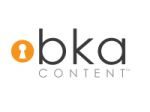Running a business is expensive! And, trying to cut costs without sacrificing quality or efficiency can be a real challenge. So, we have asked the incredible CarolRoth.com contributor network of business owners, experts, advisors and entrepreneurs to share their best cost-cutting tips for businesses. Their answers are presented below in no particular order.
You may notice some similar ideas listed, but I kept them separate, as something in the way one is framed may resonate differently with you.

1. Power Down at the End of Day
My tip is to power down at the end of the workday. Turn off all the lights, machinery (like fax machines & computers), & switch off certain appliances like coffee makers when leaving the office so they are not running all night & adding to your bills. If you are able, try to minimize electricity expenses during the workday. For instance, if you work in an office with plenty of natural light, open up the blinds/windows to let in the sunlight & turn off your office light to brighten up the room.

2. Free International Phone Calls
Although WiFi calls are sometimes OK for calling domestically, you might still get charged when calling internationally. If you have international clients or business partners who are also entrepreneurs, use a free calling app like WhatsApp (or Messenger or Skype). Just be sure your app’s profile picture is appropriate for business use. As an added bonus, besides cutting cost, those apps also enable free group calls.

3. Check Your Subscriptions
Business psychology experts know that once we are subscribed to a service, we are unlikely to unsubscribe. So, we end up with many services we pay for on a monthly basis. Many of the amounts are small, so we rationalize that they aren't worth the effort it would take to unsubscribe from them. That's exactly what these companies are counting on. I urge you to go through that list of small recurring expenses and see the big result that comes from cutting out those you don't really use any more.

4. Rethink the Lunch Meeting
There is something nice about breaking bread and getting to know someone over a shared meal. However, it adds up quickly - as do coffee meetings. If you're the vendor, you're expected to pick up the tab. And then, there are the hidden costs - drive time, gas, tolls, and STRESS. Lots of things can go wrong - traffic, delays, car issues - for little upside. Rarely does a contract get signed at the table. More likely, we lengthen the total sales time by adding another event to be scheduled.

5. Stop Sponsoring the World
When you own a small business, no matter how much they tug at your heart strings, you CAN NOT sponsor every gala, golf outing, chamber of commerce event, wine tasting, or partner event. If you let yourself, you will get sucked into a never-ending black hole of donating to organizations to get your name on a "Longest hole sign". By cutting out this expense, we saved a ton of cash that brought us $0 return or new clients.
Thanks to: Christopher Carter of
Approyo.

6. Remote Work = Better Worker
Promote telecommuting whenever possible. I was SVP of Finance at a financial institution and two-thirds of my staff telecommuted. I currently work from home rather than renting space. Telecommuting allows you to avoid the cost of unnecessary office space and improves productivity. You can recruit top talent that values the flexibility of working from home. Many processes are now paperless and communication between staff can occur via email, text, phone, or video.

7. Don't Pay Rent - Housesit!
Paying rent can be a huge expense. I have been using a house-sitting site for the last two years, so I am on the same time zone as my clients but don't incur any accommodation costs. Sits can be from one week to six months long, so you can simply filter by the longer options, with good wifi, in nice places. I mostly do video calls and have a pull-up screen, which sits behind me, so I always look like I'm in the same place. I also love staying in new places and meeting people's pets if they have them!

8. Profits Phone Home
The best change that I made was to transition my business land lines to VoIP connections. It works with my exiting office phone instruments and my cell phone, as well as through apps on my computer and tablet. As long as you have Wi-Fi access, connections are excellent and free. If you need to make calls using your cell network, then data charges apply. $700 per year with PBX, voicemail, fax, messaging and audio/video conferencing included, it even has a link for calls through your web pages.
Thanks to: Mitch Krayton of
Krayton.

9. Google My Business Investment
If you need to trim your marketing and advertising budget but don't want to trim your leads, invest time and effort on Google My Business. It's free, local marketing on steroids, yet the majority of small business owners never take the time to fully optimize or even create a free listing.
For some of our franchise locations, Google My Business accounts for up to 30% of their overall sales!
Claim and verify your listing, and then provide all the information Google wants and you're off to the races!

10. Expense Audit to Save $
In the digital age, I find myself constantly signing up for software or other services to make my business more efficient. I recently conducted an audit of all my monthly fees over the last 3 months. I found a few items that were no longer needed and could be discontinued. I also pay attention to the lifetime Appsumo deals that are emailed weekly. In the last 6 months, I was able to replace a few of my monthly fees with a lifetime deal. This will save more money over time.

11. Outsource Like a Pro!
One of the best ways to grow your business and cut expenses is through intelligent outsourcing. To give you an example, we are considered the top rubber duck manufacturer in the world. But, we outsource virtually everything... our art department, warehousing, factories, accounting, etc.. It has allowed us to remain lean and mean and focus on what we do best... design and creativity! It's a great way to manage your expenses and still grow as big as you need to be.

12. Go Remote-First
Many businesses can accomplish many of their tasks remotely. For this reason, many businesses would save a lot of money by implementing a remote-first mindset in their business. Remote-first means that your business is built around the ability for your employees to work remotely. If you can accomplish this, you will save thousands of dollars on office space and more.

13. Never Cut Too Deep
My first thought was that most people cut too deep, too fast and that is when businesses falter.
Every business needs to look at the bottom line & determine what's necessary, what's a nice to have & what's a luxury. No one can determine that for your business other than you. Take the time to ask the question, is this making my business better & enhancing customer experience? Yes or no to this question will determine what to do next.

14. Cut Down On Advertising!
On average, small businesses typically spend approximately 5% of revenue on advertising. With more potential customers online than ever before, advertising does not have to be expensive. Start with building an online presence by creating a website and/or creating a Facebook page. Tweet about your business on twitter and create an email newsletter. Cold calling, asking for referrals, and always carrying business cards have really helped my business and cut down my costs.

15. Time and Technology
Make good use of time. Time is money and efficiency saves time. Through the use of technology and outsourcing, we streamline processes to make them as efficient as possible. Even if a process is working well, we periodically consider if there are ways to make that process better, and as a result, more efficient. Making better use of time is a simple way every person in an organization can utilize resources effectively and save money.

16. Time as a Cost-cutting Measure
Time is our currency and there never seems to be enough of it to do what we need and want to do. Using time to its best effect is a surefire way to cut business costs. When you spend your time on business goals and big picture items, you move your business forward. So, focus on those items that you alone can do and hire help for everything else. It may seem counter-intuitive to spend money to make money, but it is worth it to have the resources to focus on what matters most.

17. Don't Build Your Own Software
One key way to save money is with technology. We never, ever create our own software. Everything we utilize is 'off the shelf', where we are charged on a per user basis, for instance. This allows us to expand and contract with ease and need.

18. Save Up While Scaling Up
Scaling up a business often costs time and a lot of money. It's one of the reasons why most businesses stay small. You can scale up without spending too much by outsourcing some of the work to virtual assistants. Virtual assistants cost less than full-time employees. This saves you money- money that you can put back into your business, helping you grow faster.

19. Website Hosting
If you're not technical, it can be tempting to make your online presence based on Wordpress or some other CMS and offload the upkeep to a hosting company. $100 a month isn't bad, right? Wrong, you could be paying actual cents-for-usage-hours with cloud hosting.
AWS, Azure and Google Cloud are all cost-effective options, and if you have a basic website, services like Amazon's Lightsail have pre-built instances you can deploy with no technical knowledge for a few bucks a month.

20. Understand Your Gross Margins
Examining your gross margin from each client, by each product or revenue line is an important part of understanding where you are making money and where there needs to be changes or cuts. Know your ideal margin to help you evaluate which products or services to increase or reduce. You may need to raise prices or decrease costs on products that aren’t netting enough. Justifying your cost of goods sold based on the product or service you’re selling is crucial to increasing overall profits.

21. Master Overseas Recruitment
Master the art of recruiting an overseas team who can support your main services at the fraction of mainland USA rates. There is a world of high-quality web developers and graphic designers out there waiting to be tapped. By recruiting a dedicated support team in these fields, you can lower your costs to a tenth of what you'd pay for the same skillset in the US. Ensure you give people a reasonable test and provide clear step by step instructions.

22. Enhance Your Marketing
Almost every business which is marketing on a regular basis is spending money on unprofitable campaigns. One of the best cost-cutting measures I've ever seen in business is taking a good look at your advertising and measuring it to see if it's profitable. If a campaign isn't profitable, cut it.

23. Forsake the View
When starting out, I leased a large upscale office with a view that would impress any client. I soon found that the basic services such as phone, internet and business insurance were nearly three times more costly than my home office. Profits dropped by a third. If my business were to succeed, it meant cutting costs. We moved to a modest complex. The team agreed that we were happier and more productive. Clients continued to love working with us. It wasn't about the view after all.

24. Most Small Businesses Fail
Did you know that 80% of small businesses fail during their first year and a half? For this reason, it is essential that you budget correctly. You want to be in that top 20% that makes it through. My #1 tip for all small businesses looking to cost-cut would be to make a spreadsheet in your google drive of all your next few months' worth of expenses. Make sure to follow this table and don't spend more than you should. Write it all down on a whiteboard so you are reminded every day!

25. It's a Family Affair
The best way I've found of cutting costs in my business is to utilize my family members' skills.
For instance, my husband is my business manager. He was a successful businessman for years. He is shrewd and savvy. Now retired, he has time to generate my business.
My oldest daughter is my technical helper and graphic consultant. My middle daughter, who excels at math, is my bookkeeper.
By using my in-house talent, I save a great deal of money.

26. Focus on Employee Retention
Focus on retention efforts. Studies show it costs 33% of an employee’s salary to hire a replacement. Make your business a great place to work by offering career development, work-life balance, and competitive compensation. You also need to develop a strong leadership team. People often leave not because the company was bad, but because their boss was bad.

27. Spend Money to Save Money
My grandfather once told me "sometimes being cheap is actually more expensive." I have found his advice to be true with respect to my business. One time, I had to catch an Uber to see a client. The ride price from my location was $120. To cut costs, I figured I would take the bus to a location closer to my destination, and then catch Uber. But when I got closer, the price actually went up. Not only that, but I lost 3 hours of my time, and my client got frustrated and cancelled the contract.

28. Green Can Build Profits!
Going green the RIGHT way can boost revenues, employee/customer loyalty, and profits while cutting costs. Going beyond green to regeneration can let your company profit by addressing hunger, poverty, war, catastrophic climate change, etc. Done right, it's a recipe for success. Example: solar LED light companies eliminate toxic, flammable kerosene, create jobs, and generate profit. From solopreneur to Fortune 50, companies are learning this.

29. Death by 1000 Subscriptions
Typically, most entrepreneurs will look at their biggest expenses to see what can be cut to save money for their business.
Many times, these larger expenses can't be cut without sacrificing some part of your business & the customer experience.
Monthly, make it a habit to look at all your expenses.
Typically, it's those small monthly expenses that cost only $30 that can be a death of a business when added up all together.
Cut what isn't used monthly!

30. Processize to Save Costs
In most businesses, the largest cost center is employees. To maximize (and save) on employee output, we automate as much as possible. Having an invoicing system that will automatically invoice your clients, send reminders for late payments, track expenses, etc., is a good example. If you can’t automate, then “processize”. Having complex tasks written down in systematic processes allows employees to be more productive. By doing so, I was able to save 1 full-time employee in my last company.

31. Cutting Clutter: Subscriptions
Cutting business expenses can often be difficult when making the decision of what to end. One easy option would be discontinuing any publication subscriptions unnecessary for the business to function. This could include print, digital, data, or news aggregation services.

32. Video Sales - Highest ROI
Do sales via video using your iPhone. Upload the video via YouTube and then email that link to a client. Simple as selfie style videos- no driving, short and sweet, free to upload, free to share, and free to track views. Even if you don't have internet, you can record at your local Starbucks and upload the video there, all straight from your phone.

33. Check Your Monthly Costs
A lot of our monthly expenses come from subscriptions to online marketing tools. These tools can be expensive, but they are worth it for us as they do help us improve our ROI online.
However, by looking at what we have planned for the next month, it's easy to run through our list of subscriptions and cancel whatever we're not going to use for a month or 2 until we need them again.
This takes like 10 minutes a month and definitely saves us a few hundred per month in costs.

34. Tradeshow Tricks
One tip I would give entrepreneurs for cutting sales/marketing costs is to never pay full price for exhibiting at a first-year industry tradeshow. Exhibiting can be a great sales tool, but it's typically a major sales/marketing expense. Depending on your industry, there may be several new shows each year that you could purchase booth space for. If it’s a first-year show, they have no previous data or track record to back up their asking price. Always ask for a sizable discount to try it out!

35. First Know What Your Costs Are
One of the easiest ways for entrepreneurs to cut costs is to get organized with your exact costs. Most entrepreneurs are so hyper-focused on growing revenue, client base, and profit that they lose track of controlling the back end.
One thing I do with my clients is a breakdown of expenses vs. revenue generated from those costs. This is a great start to see if you are wasting money on things you don't need.

36. No Fancy Offices
The best cost cutting advice I would give any business owner looking to cut costs is to start with their office lease or rent. It's so easy to justify a nice big fancy office or shared space like WeWork, when it's actually the exact opposite. You do not need a fancy office or address, that's all nonsense. Move to a lower rent place until you can really afford a nicer office.

37. Use Credit Card Rewards
One tip I've found useful for cutting costs is using the rewards from your business credit card for employee bonus purposes. Instead of using the rewards yourself, redeem the points in your account for gift cards to give to employees after a job well done. The gift cards not only save you from paying cash bonuses, but they also save you on paying employer taxes on those amounts as well. You'd be surprised how quickly the points build-up, as well as the increased level of motivation among employees.

38. Cancel Your Subscriptions
Do you really need all your subscriptions (Zoom, Notion, Adobe Creative Cloud, Typeform)? Sure, initially it was a good idea, but if you’re like me, you probably stopped using the service soon after and forgot you’re still paying. They add up to hundreds of dollars each month! The best time to cancel is when your credit card expires. The subscriptions you forgot about rear their devilish heads to ask you to update your payment details. Don’t get sucked in. CANCEL!

39. Business Cost-cutting Tips
Experts often talk about energy-efficient tips for homes, but they forget that people spend most part of the day at work, meaning that plenty of your business' costs are related to basic day-to-day life activities and items, such as heating, cooling, coffee machines, water, lighting, tech devices and other appliances. The more energy-efficient your office is, however, the less you will have to spend on utility bills.

40. Use Key Data to Reduce Waste
In order to eliminate company waste and costs, firms must measure and track performance with hard, fact-based data. One that is not based on egos, emotions, subjective opinions or what I call hopes, dreams and wishes. Companies that create organizational optimization and efficiency through the documentation of key processes that meet the 20/80 rule — that is formalizing the 20 percent of the business that contributes to 80 percent of organizational success- can use that key data to cut costs.

41. Unorthodox Cost Cutting Tip
What 10 year old fashion brand wouldn't want to see their product on store shelves? Us! After seeing a marked increase in online sales, we switched to greater margins, higher customer satisfaction levels and reduced employee stress levels by eliminating nearly all wholesale accounts for Clipa bag hanger bracelets. We answer questions on our toll-free line and on social media, ship all orders the same business day, and offer free U.S. shipping with no minimum.
Thanks to: Trish Sweeney of
Topcor.

42. Plan Your Route to Save Money
As a Private Investigator in New York City, I travel daily to meet clients & perform stakeouts or surveillance in the five boroughs & beyond. When I started my company, I'd visit clients as the calls came in, but that ended up costing me so much in gas & tolls. I quickly learned that I needed to schedule my activities for each day to only visit one area or only drive on one toll per day (if possible). It's easily saved me $1,000+ per month, which can be quite impactful on your wallet.

43. Hire Remote Employees
Our most impactful cost-cutting initiative has been hiring remote employees. Employing remote workers lowers overhead expenses for everything from office space to computing and even coffee. These can be major expenses on a young company's income statement. In addition, we've found our remote workers to be more enthusiastic and productive since they enjoy a better work-life balance and spend less time doing unproductive things like commuting.

44. Loom Video Recording
I use this free service daily in my business. Whether I’m recording feedback for a contractor or an email response for a client, Loom makes communicating fast & easy. It saves me time from writing long emails. Tone is conveyed much easier than in written form. I also use video recording for YouTube videos with the added bonus that text can be transcribed which I can then add to blogs. It’s saved me time and money in unexpected ways. I can’t imagine life without it, and my clients love it!

45. Learn Digital Tasks
Learn how to handle certain digital tasks on your own. Even though I rely on people hiring me for design and marketing tasks, I can't tell you how many people would have saved money if they would have taken some time to learn basic photoshop, social media, or website maintenance tasks. You don't need to be a professional, but if you take advantage of free tutorials, you should have no trouble learning enough to handle just about anything.
Thanks to: Matt McKenna of
DELT.

46. Cut Email Send Costs
My favorite cost cutting tip is using Sendy and Amazon AWS for email sending. It is my favorite low cost marketing method that slashes the cost of sending emails. The interface is simple and intuitive, and I can send emails to a list of 1K for only $.1 per send, while using larger providers such as MailChimp charge hundreds of dollars a month just to store a list of that size.

47. Artificial Intelligence Is Key
Artificial Intelligence is changing the way we do things. There are so many tasks employees perform in business that machines that run on Artificial Intelligence can do perfectly and even more efficiently. The cost of hiring and paying employees can't be compared to that of machines that run on Artificial Intelligence. When you do your analysis well, you will be amazed at how much you are saving.

48. Ditch the Office
Overhead costs such as rent can drain your business finances. Adopting a work from home culture in your business will not only improve your cash flow, it also promotes a healthier work/life balance, which is critical in maintaining employee satisfaction and retention. Set the expectation for your staff through virtual meetings and benchmark performance against KPIs to promote maximum productivity. Reinvest in your staff through team bonding activities to build a positive company culture.

49. People are Expensive
People are expensive, so optimize around that! For my business and teams I've run, that usually means prioritizing generalists over specialists. People who can do any task you throw at them tend to have less down time. Second, you need to foster a culture that sees all work as work. Instead of assigning tasks by role (PM vs dev or junior vs senior), hire people that can jump on any task that needs doing (no job is "beneath" anyone, it all needs to get done).

50. Monitor Your Subscriptions
Over the years, we eventually discovered that various subscription services - our magazines for the waiting room, memberships, even a lot of our software - they began to really add up. We make a point to charge all our subscription services to a single card, which we review every recurring charge quarterly and ask, “Do we still need that?” Frequently, the answer is “No”. We’ve saved a bundle by keeping an eye on these hidden recurring charges.

51. Test Tools
To cut costs for entrepreneurs, it might sound counter-productive, but I recommend entrepreneurs to test many different tools. Most online tools have free trials, so the investment is pretty much 0 at first. Then, when an entrepreneur believes the tool he/she used makes him/her waste less time or be more productive, I suggest them to invest in these tools. By being more productive and wasting less time on repetitive tasks, entrepreneurs will be able to focus on what matters and what's important.

52. Software Saving Tips
If you are a startup entrepreneur and are having money flow issues, the biggest cost would be buying software you need to run your business.
Most software companies online now work on the SaaS model which can get expensive if you need to purchase multiple subscriptions.
If you find you are stuck and need help, the best thing to do is to use Google, the best way to find it is to use the keyword "open source" when you search for the type of software you need, which is free to download and use.

53. Cut Cloud Software Expenses
No matter what the company — there’s a nearly 100% chance you use cloud software. One problem with SaaS is that it's not uncommon to rarely use the software you are paying for. Prime cost-cutting areas include:
Extra unused licenses
Inactive users (including former employees)
Duplicate apps or services that do the same thing
Unoptimized licenses (users wrongly placed in higher-priced tiers)
Keeping track of usage and renewal dates prevents unnecessary expense.

54. Financial Expert
Consider going remote.
Going remote or semi-remote can drastically cut the costs of your business. If you have employees who don’t need to work in-house, consider transitioning them to remote work. Offer them a few remote days a week. Also, if you’re hiring new employees, hire them for remote work.
A remote workforce means you’ll be able to rent smaller physical spaces, spend less on the office supplies, cut the commute expenses, reduce the office bills, waste, cleaning costs, etc.

55. The Future of PanIQ Room
We're operating a chain of escape rooms, where 90% of the monthly expenses are related to the use of real estate and human resource. Since the rent fee is previously set, we had to find a way to minimize the cost of labor. We developed an innovative escape room concept, which is automatic and one game master can supervise multiple games. Resetting the rooms is unnecessary; hints are provided by a software. The customer experience is consistent, while the puzzles are still spectacular and unique.

56. Your First Address
The number one cost cutting tip I often offer to startups is to seek out a co-working space with a network of like-minded members. Co-working spaces act as a proxy to capital in early years when growth is risky. Seeking out a network of fellow entrepreneurs often helps startup founders avoid the very mistakes others have made before them.

57. Before You Cut Any Advertising
Cutting part of their advertising budget is the first place that companies cut when they need to reduce costs. But, before you decide which media to cut and by how much, take about an hour to read a booklet about some easy-to use advertising math that can help you make your advertising much more effective and much more efficient. The math is called "The Barrows Popularity Factor" and it can help all kinds of companies make a lot more money. So before you cut any advertising, first do this math.

58. Ditching CPA for Automation
For the longest time, I used to hire a CPA to do my tax returns, payroll, etc. I was paying $1000s a year and just felt I could do it. Well, I went ahead and signed up with QuickBooks and haven't looked back. I now pay less than $20/mo and this includes everything my CPA used to do. I have to click a few buttons here and there, but it's almost on autopilot. It's great!

59. Explosive Growth Needs Pruning
The most important cost to cut is often the most painful. I call this "Vanity Fat" - losing it can feel embarrassing and feel like you're failing.
For Sene, it was closing our LA store. We had it for almost 2 years, but it was a drag on the business.
Closing it enabled us to focus on our online custom travel suit business. This single move started a chain of events, with us growing 60% month over month this last quarter.
Thanks to: Ray Li of
Sene.

60. Think Like an Economist
“Trimming fat” is painful and no one will acknowledge that their contributions are not critical to the mission. When making complex decisions, think of all the attributes associated with each decision and quantify the intangible ones. Think about their impact and weigh them accordingly. Once you quantified all of the qualitative attributes, you can compare them, “apples to apples.” Having numerical values will help make logical decisions in times of strife, and curb emotional impulses.
Thanks to: Lamine Zarrad of
Joust.

61. Hire Pros for Online Marketing
Hiring competent pros (hopefully through a referral) to optimize your online marketing can ensure that you're following best practices, it makes efficient use of your budget, & frees up time. There are so many gimmicks in that space that having a trusted partner can be a lifesaver. The freed up time has increased my productivity by allowing me to put more time & energy into customer service & other ways to make my business more successful; such as being the best version of myself in front of clients.

62. Entrepreneurs and Their Taxes
Filing for taxes as a business owner is very different from filing for taxes as an individual. Whether you own a business or not, all taxpayers are encouraged to maximize the economic gains by paying as few taxes as possible. Both individuals and small businesses are held to the same standards and face the same consequences if taxes are not paid on time. Entrepreneurs do have tax benefits and should take advantage of write-offs and subsidies.

63. Get Your Hands Dirty and DIY!
My sisters and I decided to open an e-commerce store selling adaptive aids. We had a stellar idea for an innovative product but didn’t want to spend money on having someone else build the prototypes. Instead, we went to a Hollywood mask shop specializing in silicone and picked their brains on how to mix, mold, color, and cure. Rolling up our sleeves, we made 1,000 prototypes in the kitchen ourselves, which would have cost us upwards of $50,000 if we had to hire a medical device design company.

64. Ask For a Lower Cost
As a large dental practice, we’re always looking to keep costs down without sacrificing the integrity of our work. One way: Anytime we’re looking for a new product or company, we simply "ask" if there is a way to lower the cost. Sometimes they say no, sometimes they recommend products we hadn't thought of, sometimes they offer to collaborate and exchange services so we can both cut costs and simultaneously save on taxes. I like to put the ball in their court and let them earn my business.

65. Chat Up Your Community
Interact with your online community. It is easy to hire a social media manager, PR agency or even buy a bot, but these expenses can add up! Take a couple of hours a day to interact on Instagram, twitter or even LinkedIn with people in your field. Not only will you gain an organic following and community, but you will see your engagement increase, as well.

66. Social Media is Your BFF
Currently, to be successful in reaching your customer means becoming best friends with social media. Those tools are readily available and free. Building a strong online presence is essential in creating a memorable brand. That means having a profile/account on every available social media site and information sharing platform. Since each social media site caters to their own audience, you can efficiently create similar content to post across multiple platforms.

67. Saved by Providing Coffee Mugs
We had disposable cardboard cups for use while drinking coffee in office. As we increased in size, we started seeing an increase in the cost of coffee cups.
We provided each employee with a customized ceramic mug with their name engraved. They used it for coffee and other purposes and thus, we did away with the cardboard cups. It saved us a bit of money, in addition to the mugs acting as souvenirs for employees and also helped us with branding, not to forget the positive environmental impact.

68. Go Remote!
Take your business and go remote. It's a cost-cutting measure that eliminates a lot of fixed expenses and builds a unique culture. It is not for everyone, but you do not have to pay for an office anymore. Identify your company's core values and hire people that love what they do professionally. If you want to scale your team into the cloud, start by hiring a remote employee.

69. Take the Leap, Go Remote
Nothing weighs down the budget quite like operating expenses-- and physical offices accrue a lot of them. A remote conversion means spending less on rent, office supplies, and staffing. It will also help you to recognize inner-team dysfunction and alter the way you look at your business. In order to survive, remote teams need to be efficient and technology based. This forces you to streamline your operations and become truly paperless, both of which save a lot of money in the long run.

70. Stop Wasting Precious Time
The best cost-cutting tip I’ve implemented into my business is to outsource tasks that take me entirely too long to complete.
Several years ago, I came to the realization that I’m not going to understand every tool and program needed to operate my business and that’s okay! As I began to outsource jobs that took me longer than an hour to figure out, I noticed that I was more efficient because I was working in my zone of genius. My time is money. I should value it the same.

71. Flexible with Freelance
We utilize part time employees for admin. Our small workforce means that we don’t need much admin.
If we take on more work, our current staff will be maxed out, so we will get contractors in to help with the extra work. This saves us from having to offer overtime, or employ people temporarily.
This helps us keep overhead low. In digital, our business can be ramped up quite quickly, allowing us to be more flexible and ensure that all our clients - old and new - are satisfied.
Thanks to: Ramya Menon of
Bayut.

72. Teach & Implement It Online
A live event is costly and time consuming for the owner and the attendee. In 2005, I held my first 1-day strategic planning day for a group online. Gone was the cost of the venue, renting technology, food, refreshments, airplane, etc. The cost was the use of a webinar system. I can charge attendees less, too! I taught part 1 and answered questions. Attendees got offline and did the work. I was available by phone/email during breaks. We got back online, provided feedback, and then started part 2.







































































